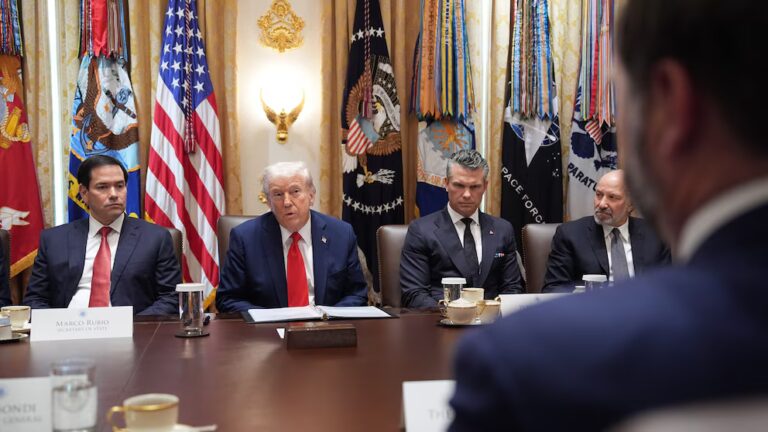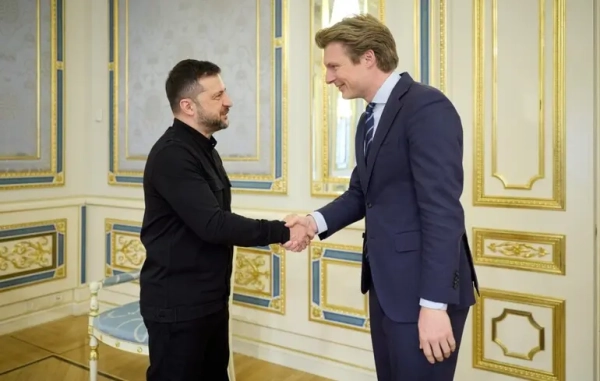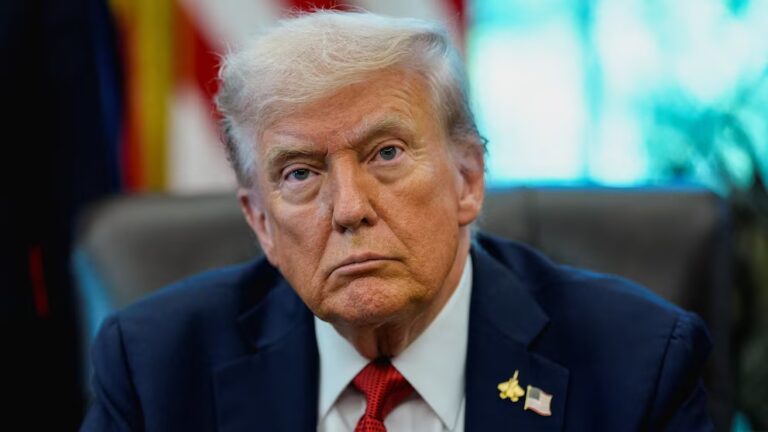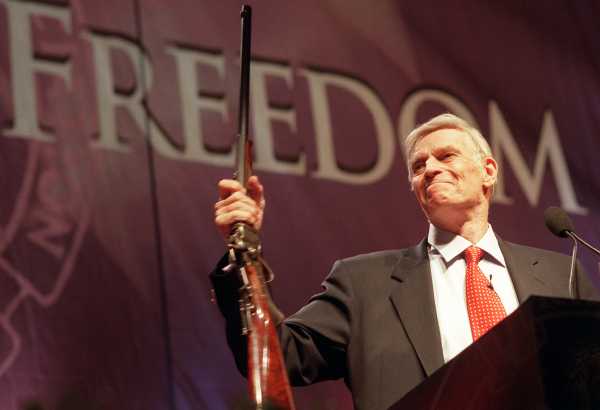
It was said in 1989 after a gunman killed five children at Cleveland Elementary School in Stockton, California. It was said in 1999 after two teenagers killed 13 of their peers at the high school in Columbine, Colorado. It was said in 2012 after a shooter killed 20 children and six adults at Sandy Hook Elementary School in Newtown, Connecticut. It was said in 2016 after a man killed 49 people at the Pulse nightclub in Orlando, Florida, and in 2017 after a man killed 58 at a country concert in Las Vegas.
“Never again.”
On February 14, it happened again. A man went into the Marjory Stoneman Douglas High School in Parkland, Florida, and opened fire. He killed at least 17 people and wounded 14 others — making this the deadliest school shooting since Sandy Hook.
Once again, Americans are hoping it will never happen again. But because of the US’s limited gun laws and a reticence to address the root causes of mass gun violence, it very likely will. While other countries, from the UK to Australia, have responded to shootings with new restrictions on firearms, US lawmakers will likely be unable to pass significant laws curtailing access to guns, and yet another person will be able to carry out yet another horrific act. No amount of carnage — no amount of research showing gun control saves lives — seems to change this.
This has become so accepted that the satirical news site the Onion has been able to regularly repromote its article “‘No Way To Prevent This,’ Says Only Nation Where This Regularly Happens.”
How did American politics on guns go so wrong?
Experts and historians in this field told me that this deterioration has been decades in the making, as the top organization of the gun lobby, the National Rifle Association, took part in a decades-long, massive political campaign that helped alter Americans’ — and even the courts’ — views of gun rights and particularly the Second Amendment.
In doing this, the NRA shifted the country from the view that the Second Amendment is about the federal government’s role in state-run militias to one that it’s really about individual Americans’ right to bear arms. Through this constitutional shield, America’s gun rights enthusiasts have been able to tilt the country’s politics dramatically to the right on this issue.
This has proved remarkably endurable. Despite mass shooting after mass shooting, America has been unable to pass any serious federal gun control. And beyond such tragedies, the US has been unable to deal with even everyday gun violence — the kind that has made America No. 1 in the developed world (by far) for gun deaths.
And it all comes down a big shift in views on a provision of the Bill of Rights that was once called the “lost amendment” because it got so little attention from scholars and the courts. The NRA managed to revive this amendment from its forgotten status to make it one of the most important pieces of law in modern political times.
A brief history of the Second Amendment
“The current situation,” Saul Cornell, a historian at Fordham University, told me, “is kind of anomalous.”
During the Constitution’s drafting and ratification, there was some concern that the federal government would have far too much power to dismantle state-run militias, because the Constitution gave the federal government power over “organizing, arming, and disciplining, the Militia.” This worried states, which relied on militias for law enforcement and defense. (In particular, Carl T. Bogus, a researcher at the Roger Williams University School of Law, argues that Southern states were concerned that the federal government could use this power to go after slavery, since militias were often used as slave patrols at the time.)
After the Constitution was ratified, the founders took to writing a Bill of Rights to assuage the concerns raised by anti-federalists. Aware of criticisms about the federal government’s powers over state militias, they included the Second Amendment in this context.
“With this background, now listen to the Second Amendment fresh and anew,” Bogus told me, reciting the law: “A well regulated militia, being necessary to the security of a free state, the right of the people to keep and bear arms, shall not be infringed.”
The historical record reflects this. In The Second Amendment, author Michael Waldman goes back to the creation of the Bill of Rights for answers. He found that the Second Amendment was among the least debated provisions by Congress. In the House, he wrote, “Twelve congressmen joined the debate. None mentioned a private right to bear arms for self-defense, hunting, or for any purpose other than joining the militia.”
In fact, guns were well regulated at the time. Legal scholar Adam Winkler wrote for the New York Review of Books:
As for what constitutes a militia, the founders were purposely vague, leaving it to Congress to define. In the past, these were organizations of all or most able-bodied men that states and the federal government armed for security and law enforcement. In modern terms, the militia is, essentially, the National Guard.
Much of this, Cornell said, came out of a Cincinnatus view toward guns and defense — a reference to the legendary Roman general who, according to the story (and possibly myth), went back to farming instead of attempting to seize more power after he led the Romans to victories. This kind of republican value was embedded in American values at the time, so the founders made sure to enshrine it in the Constitution. But it only preserved the collective right to own firearms insofar as able-bodied men needed the weapons to help defend their state and country.
This was the perspective of legal scholars and courts for most of US history. As Bogus noted in a 2000 law review article, “from the time law review articles first began to be indexed in 1887 until 1960, all law review articles dealing with the Second Amendment endorsed the collective right model.”
“The collective rights model holds that the people only have a constitutional right to keep and bear arms within the militia,” Bogus said. So Americans collectively had legal access to guns to take part in the militia, but the Second Amendment didn’t protect any rights beyond that.
The individual rights model, meanwhile, “puts the Second Amendment on par with other fundamental rights of individuals (speech, liberty, association) and raises the bar of protection from state and local governments looking to regulate the right to bear arms,” Amanda Hollis-Brusky, a constitutional law expert at Pomona College and author of Ideas With Consequences, told me. In short, it makes it much harder to regulate guns — because now every single individual, not just the collective (or militia), has a right to bear arms.
America has effectively shifted from the collective rights to individual rights model in recent years. That shift, however, did not come out of nowhere; it was decades in the making.
The NRA’s Cincinnati revolt changed everything
Since the late 1970s, the NRA has conducted a concerted campaign to change Americans’ views of the Second Amendment. And by and large, it has worked.
To understand the recent developments, it’s important to understand how the NRA has changed over the past several decades. Originally, the NRA was a hobbyist group with a focus on marksmanship and hunting — not really much in the way of politics.
That changed in 1977, with what’s now known as the Cincinnati Revolt. “The NRA has been in the grips of right-wing partisans since that time,” Bogus said. “That’s created a very powerful lobby.”
Prior to the 1930s, the federal government had a very limited role in gun policy. It was by and large restrained to regulating militias. With the rise of the New Deal, expansion of federal powers, and an increase in homicides and crime, Congress and the White House in the ’30s embraced a more involved role. They enacted the National Firearms Act, with restrictions on machine guns, sawed-off shotguns, and silencers. The NRA, a large but not very political body at the time, didn’t really stand in the way of the law.
For the next few decades, guns weren’t much of an issue at the federal level. But that began to change in the ’60s, with multiple assassinations — of John F. Kennedy, Robert Kennedy, and Martin Luther King Jr. — and the rapid increase in crime at the time. So the federal government again passed a new series of gun restrictions, particularly the Gun Control Act of 1968.
At this point, gun rights activists began to worry. The leadership at the NRA was complacent with and even publicly supportive of gun control policies, and began to talk about withdrawing from its already limited political lobbying. (Notably, Lee Harvey Oswald, who assassinated JFK, obtained the gun through an ad in the NRA’s magazine, American Rifleman — so the organization’s leaders likely felt restrained in how far they could go in opposing gun control, given the potential backlash the group could face.)
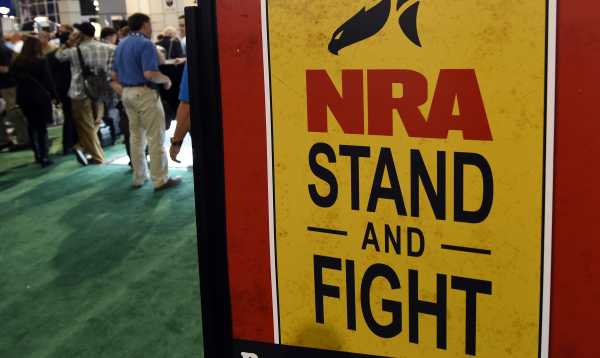

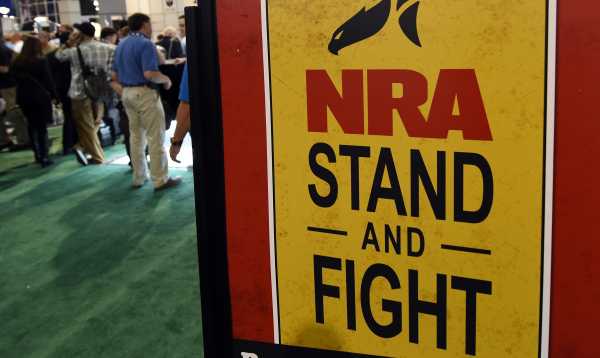
But a few hardline members, led by Harlon Carter, subscribed to the argument that if the federal government were given even an inch in regulating guns, it would take a mile, and that would end up with guns banned altogether. So during the organization’s 1977 meeting in Cincinnati, Carter and his supporters rebelled, placing him in charge. It was at this point that the NRA truly became the gun lobby. (Much more on all of this in the books Under Fire by Osha Gray Davidson and Gunfight by Adam Winkler.)
In particular, the NRA has been fueled by the belief that the Second Amendment is the one thing standing against a tyrannical government. Its core claim: Without an armed citizenry, the government will have an easier time suppressing people’s rights. It was not that the Second Amendment was there to let state governments maintain militias; it was that the Second Amendment was there to let the people stand against the government in general. In embracing and propagating this view, the NRA managed to tap into growing public distrust in government — fueled especially by Watergate and the failure of the Vietnam War.
Kristin Goss, author of The Gun Debate: What Everyone Needs to Know, said the shift also turned the NRA into the organization we know today: not just opposed to stricter gun regulations, but also a “culture warrior” group of conservatives distrustful of government. “I don’t think they’re really a single-issue gun rights group anymore,” she said. “That’s still the dominant theme, but gun rights are linked to a lot of other issues that are not narrow, technical questions of gun regulation.”
This, perhaps, is one of the reasons the NRA has done such a good job of achieving its mission: By describing gun rights as foundational to the nation and liberty through the Second Amendment, it elevated guns and related issues into a cultural and political identity that went beyond the legal technicalities of gun control. That made guns feel crucial to the soul of America, and many on the right embraced the new perspective.
How the NRA shifted the conversation
From the late ’70s on, it became increasingly difficult to pass federal gun laws. Some measures, like the Firearm Owners’ Protection Act of 1986 and the Brady Handgun Violence Prevention Act, still made it through. But these policies faced much stiffer opposition than they would have in the past, as now-common arguments over self-defense, the ability to use firearms to stand for liberty in the face of tyranny, and the futility of gun control began to spread.
And, crucially, the NRA worked to push the idea that the Second Amendment protects individual rights, giving constitutional firepower to supporters of gun rights.
This caught on. Before 1970, Bogus wrote, “a total of three [law review journal] articles endorsed the individual right model and twenty-two subscribed to the collective right view.” He added, “From 1970 to 1989, twenty-five articles adhering to the collective right view were published (nothing unusual there), but so were twenty-seven articles endorsing the individual right model.” At least 16 of the individual rights model articles “were written by lawyers who had been directly employed by or represented the NRA or other gun rights organizations, although they did not always so identify themselves in the author’s footnote.”
Congress got in on the action. In 1982, the Senate Subcommittee on the Constitution, led by Sen. Orrin Hatch (R-UT), issued a report, “The Right to Keep and Bear Arms.” It argued, “What the Subcommittee on the Constitution uncovered was clear — and long lost — proof that the second amendment to our Constitution was intended as an individual right of the American citizen to keep and carry arms in a peaceful manner, for protection of himself, his family, and his freedoms.”
Then came “The Embarrassing Second Amendment,” a landmark article by Sanford Levinson. The article itself didn’t make a new argument or explicitly take a side in the collective versus individual rights debate, but it was notable because the author — a well-known liberal scholar — urged readers to take the individual rights model of the Second Amendment seriously, giving the idea more credibility. It was a huge deal at the time, gaining coverage across media outlets and widespread promotion by gun rights groups.
The NRA stepped up its efforts in the ’90s, helping fund a new group, Academics for the Second Amendment, and launching its annual “Stand Up for the Second Amendment” essay contest with a cash prize. According to Bogus, “At least fifty-eight law review articles endorsing the individual right view would be published during the 1990s (compared to twenty-nine favoring the collective right position).”
It can be easy to underestimate the impact of these kinds of journal articles. Many people may wonder who even reads law review journals. The answer, however, is legal scholars, lawyers, judges, and politicians — and these people then permeate their ideas in popular media and in their day-to-day work. Over time, that can lead to a big shift in public opinion and policy.
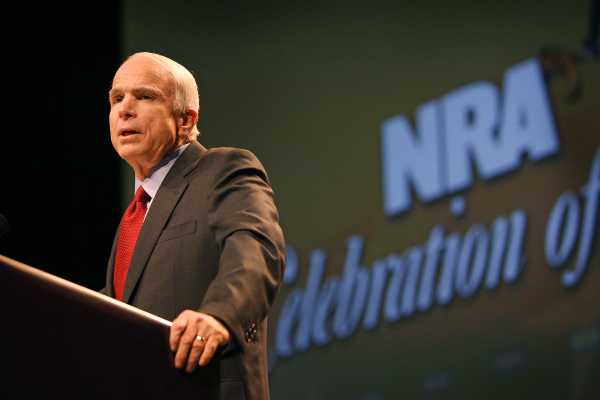

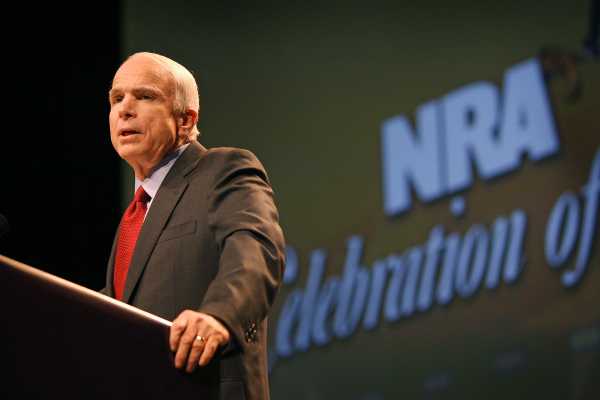
Public polling certainly suggests that’s what happened: In 1959, when Gallup asked if the law should ban handguns except for the police and other authorized persons, 60 percent of Americans said yes. By 1980, that had dropped to 38 percent. As of the latest survey, in 2016, it’s 23 percent.
It also led to a big shift in the Supreme Court — with the District of Columbia v. Heller decision in 2008. Before that, the Court had reviewed just three cases related to the Second Amendment, Bogus said, and those decisions took the view that it was about protecting states’ ability to maintain militias.
For example, the Supreme Court unanimously ruled in 1939’s United States v. Miller that Congress can ban sawed-off shotguns because that weapon was of no use in a well-regulated militia, making it clear that the right to bear arms was inseparable from the role of a militia.
Justice James McReynolds wrote in the majority opinion, “The Court cannot take judicial notice that a shotgun having a barrel less than 18 inches long has today any reasonable relation to the preservation or efficiency of a well regulated militia, and therefore cannot say that the Second Amendment guarantees to the citizen the right to keep and bear such a weapon.”
That changed with Heller, when Justice Antonin Scalia concluded in the Court’s opinion that “the Second Amendment conferred an individual right to keep and bear arms.”
Hollis-Brusky called this an example of “popular constitutionalism,” or “the concept that the meaning of the Constitution can develop outside the courts by political and popular movements.”
She explained: “Driven in large part by the National Rifle Association and its campaign to frame the Second Amendment as an individual right, coupled with its lobbying efforts and increased influence on Republican Party platforms and legislators, most Americans already believed that the Second Amendment was more robust in its guarantees and protections than the Supreme Court (or any court) had interpreted it to be for well over 100 years.”
So Republicans, to match shifting popular opinion, changed their platform to take on a more pro-gun view, and Republican presidents from Ronald Reagan on down appointed justices that reflected this perspective. That culminated in Heller, when there were, after years of efforts, five justices on the bench ready to cement the interpretation of the Second Amendment that had circulated in law journals and political discussions for decades.
Historians and experts point to other factors that also contributed to new views of the Second Amendment, including America’s historically high levels of gun ownership, the proliferation of cheaper guns, the rise of Jacksonian democracy and individualism, the replacement of militias with a professional army, and Reconstruction. But the change in the NRA’s public mission is the one element that came up again and again in my discussions and readings — and seemed to have the biggest impact on modern history.
America’s gun debate is now totally warped — and unlikely to change
It took a cataclysmic event in a major advocacy organization’s history to help change how America views the Second Amendment and guns. It stands to reason, then, that it would take a similar event to cause another course change — one that could perhaps bring a harsher view toward gun rights.
The historians and experts I spoke to, however, are doubtful this tipping point will come anytime soon. After several years of horrific mass shootings, from Newtown to Orlando to Las Vegas, America’s views on guns have proven remarkably resilient. As Bogus told me, “If there had been a tipping point, the rivers of blood that have already been generated would have washed into that tipping point and we would have had it.”
One fundamental problem, it seems, is that there is no equivalent to the NRA on the other side. Several groups have tried, such as Everytown for Gun Safety and Americans for Responsible Solutions, but none have successfully matched the NRA’s influence. This has created a lopsided political debate, at least at the federal level.
This goes hand in hand with another problem: Although the majority of Americans, based on public polling, support various kinds of tougher regulations on guns (from universal background checks to a federal database for sales), the reality is that most people are not voting on this issue, with the economy and traditional national security concerns taking much more attention.
Those who are single-issue gun voters, meanwhile, tend to be on the right. There aren’t that many of these voters, but they tend to outnumber the people on the left who would be swayed to vote for candidates just because they back more gun control.
As Republican strategist Grover Norquist said in 2000, “The question is intensity versus preference. You can always get a certain percentage to say they are in favor of some gun controls. But are they going to vote on their ‘control’ position?” Probably not, Norquist suggested, “but for that 4-5 percent who care about guns, they will vote on this.”
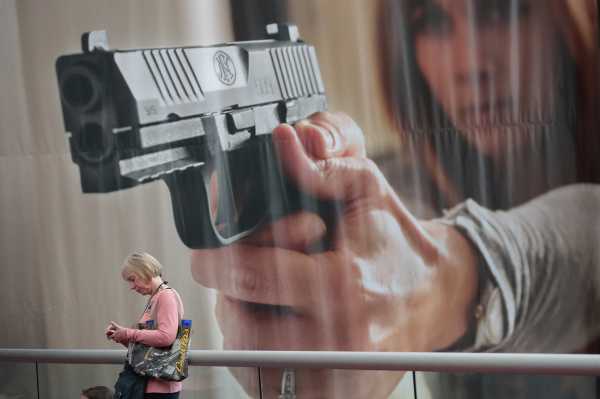

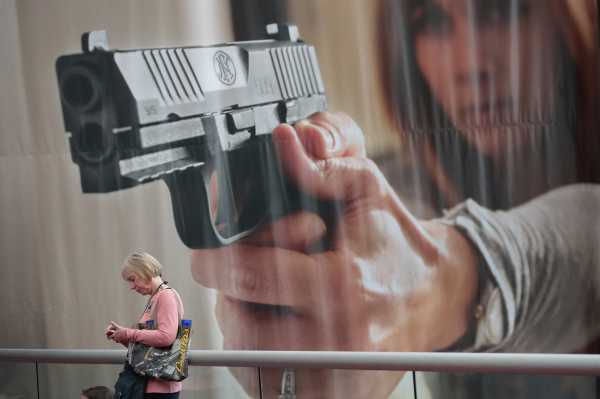
What’s behind that passion? Goss, who’s also a political scientist at Duke University, previously told me that it’s a sense of tangible loss — gun owners feel like the government is going to take their guns and rights. In comparison, gun control advocates are motivated by more abstract notions of reducing gun violence — although, Goss noted, the victims of mass shootings and their families have begun putting a face on these policies by engaging more actively in advocacy work, which could make the gun control movement feel more relatable.
That makes it much more difficult for someone on the left to run on gun control, while someone on the right is forced to run on gun rights to avoid a revolt from a passionate base in a primary election.
The one caveat is federalism. Although little has happened at the federal level, there has been some movement in the states. Washington state and Oregon, for instance, passed laws ensuring all guns have to go through background checks, including those sold between individuals (while other states, such as Kansas and Texas, have weakened gun restrictions).
This, however, isn’t a full policy solution to restricting access to firearms, because people can simply travel across state lines to get guns. We see this in the real world: Chicago has fairly tough gun laws, but Indiana does not, and other parts of Illinois have laxer rules. So it’s not uncommon for people to leave Chicago to buy guns, take them back to the city, and sell them to would-be criminals. A 2014 report from the Chicago Police Department found that nearly 60 percent of the guns at crime scenes that were recovered and traced between 2009 and 2013 came from outside the state, and about 19 percent came from Indiana — making it the most common state of origin for guns besides Illinois.
Only the federal government, with its jurisdiction between state borders, can really address this issue. But the experts I spoke to have told me they have little faith this will happen in the foreseeable future — after the NRA and others have shifted how Americans, including the courts, view the Second Amendment and gun rights.
As Cornell put it, “It’s going to take a lot more time and, unfortunately, a lot more carnage to make anything happen at the federal level.”
Sourse: vox.com
